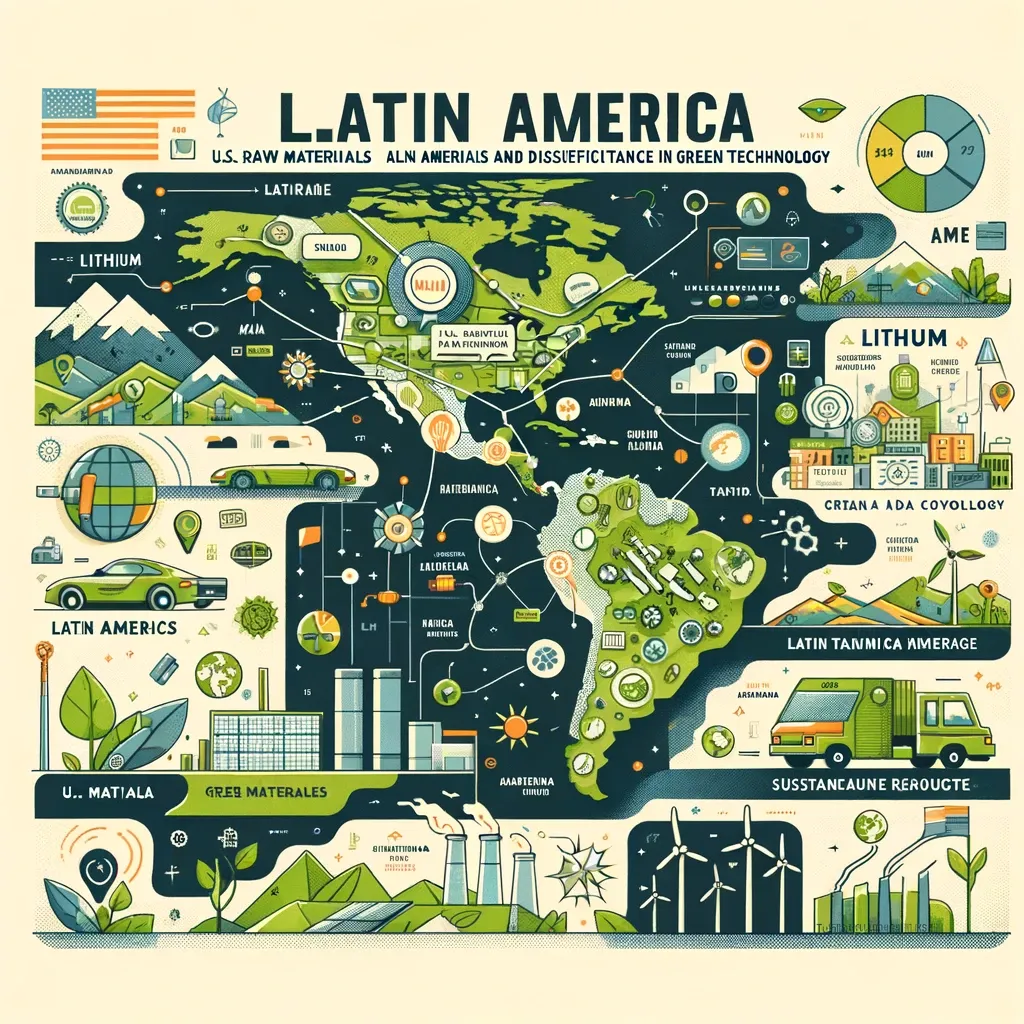The Tightrope of Influence: Navigating the Perils of China's Expansion in Latin America
- Rising Power: China's strategic foray into Latin America marks a pivotal shift in global trade dynamics, challenging traditional geopolitical landscapes.
- Economic Behemoth: With investments spanning infrastructure, technology, and mining, China's economic footprint in Latin America deepens, reshaping regional economies.
- Strategic Alliances: The Belt and Road Initiative (BRI) extends its reach, ensnaring Latin American countries in a web of Chinese-led economic and infrastructural projects.
- Diplomatic Chess: Latin America finds itself at a crossroads, balancing between the economic allure of Chinese investments and the preservation of its sovereignty and long-standing ties with Western allies.
- Environmental and Social Impact: The ecological footprint of China's projects and their social implications pose significant challenges, stirring debates on sustainable development and local communities' well-being.
- Future Trajectories: As China strengthens its presence, Latin American countries must navigate the delicate balance of leveraging economic opportunities while safeguarding their strategic autonomy.
Introduction
In recent years, Latin America's geopolitical landscape has experienced a significant shift, marked by the deepening footprint of Chinese investments, partnerships, and influence. Launched by China in 2013, the Belt and Road Initiative (BRI) has emerged as a cornerstone of this expansion, weaving a network of economic and infrastructural projects across the globe, including Latin America. While these initiatives promise economic growth and development opportunities, they also present challenges and strategic dilemmas for the region and its traditional allies.
Understanding the Belt and Road Initiative in Latin America
The BRI, also known as "One Belt, One Road," aims to enhance global trade and stimulate economic growth across Asia, Africa, and beyond through a vast network of shipping lanes, railways, and infrastructure projects. In Latin America, the BRI's extension has increased Chinese presence, which is characterized by investments in critical sectors such as mining, telecommunications, and infrastructure. As of early 2023, fifteen out of twenty-three Latin American countries have signed onto the BRI, signaling a substantial shift in the region's economic alliances and strategic priorities.
The Dual Facet of Chinese Investments
On one hand, Chinese investments promise economic revitalization and development. Projects like Peru's mining sector expansion, the construction of hydroelectric plants in Ecuador, and the proposed canal in Nicaragua offer the potential for job creation and economic growth. However, these investments come with strings attached, often leading to concerns about debt dependency, environmental sustainability, and the erosion of local industries.
The Strategic Implications of Shifting Alliances
The growing Chinese influence in Latin America raises alarms about the region's geopolitical balance. Historically considered the United States' backyard, Latin America's pivot towards China has strategic implications, potentially altering diplomatic relations, military alliances, and economic dependencies. The shift challenges the Monroe Doctrine's long-standing premise and invites reevaluating the United States' engagement strategy in its hemisphere.
Economic Dependencies and Political Leverage
The BRI's expansion has also heightened concerns about economic dependency and political leverage. Chinese loans and investments often come with high-interest rates and strings that can lead to debt traps for participating countries. Such economic dependencies give China potential leverage over Latin American nations' domestic and foreign policies, raising red flags about sovereignty and independence.
The Environmental and Social Impact
Moreover, the environmental and social impacts of Chinese projects must be considered. Large-scale infrastructure and mining projects have sparked debates over their ecological footprint, water usage, and displacement of local communities. The lack of community involvement and transparency in these projects exacerbates environmental degradation and social unrest, challenging sustainable and inclusive development principles.
Navigating the Future: Recommendations for Latin America
As Latin America navigates this complex landscape, a balanced approach is essential. Strengthening regional cooperation and diversifying economic partnerships can mitigate overreliance on any single foreign investor. Latin American countries must also advocate for transparent, fair, and environmentally responsible investment practices, ensuring that foreign projects align with national development goals and sustainable practices.

Conclusion
The rise of Chinese influence in Latin America presents a multifaceted challenge, intertwining economic opportunities with geopolitical and environmental risks. As the region becomes a battleground for influence between global powers, Latin American countries must tread carefully, balancing the benefits of foreign investments with the imperative to maintain sovereignty, environmental integrity, and social cohesion. The path forward requires a strategic vision that prioritizes sustainable development, equitable partnerships, and regional autonomy, ensuring that Latin America's future remains in the hands of its people.





























